Bionanotechnology: Silver Nanoparticles Supported on Bovine Bone Powder Used as Bactericide
Abstract
1. Introduction
2. Experimental
2.1. Bovine Bone Powder Preparation
2.2. Synthesis
2.3. Characterization
2.4. Antimicrobial Assay
3. Results and Discussion
3.1. Characterization
3.2. Antibacterial Action
4. Conclusions
Supplementary Materials
Author Contributions
Funding
Acknowledgments
Conflicts of Interest
References
- Yoon, H. Current trends in sensors based on conducting polymer nanomaterials. Nanomaterials 2013, 3, 524–549. [Google Scholar] [CrossRef] [PubMed]
- Bruce, P.G.; Scrosati, B.; Tarascon, J.-M. Nanomaterials for Rechargeable Lithium Batteries. Angew. Chem. Int. Ed. 2008, 47, 2930–2946. [Google Scholar] [CrossRef] [PubMed]
- Moon, R.J.; Martini, A.; Nairn, J.; Simonsen, J.; Youngblood, J. Cellulose nanomaterials review: Structure, properties and nanocomposites. Chem. Soc. Rev. 2011, 40, 3941. [Google Scholar] [CrossRef] [PubMed]
- Klaine, S.J.; Alvarez, P.J.J.; Batley, G.E.; Fernandes, T.F.; Handy, R.D.; Lyon, D.Y.; Mahendra, S.; McLaughlin, M.J.; Lead, J.R. Nanomaterials in the environment: Behavior, fate, bioavailability, and effects. Environ. Toxicol. Chem. 2008, 27, 1825–1851. [Google Scholar] [CrossRef] [PubMed]
- Roduner, E. Size matters: Why nanomaterials are different. Chem. Soc. Rev. 2006, 35, 583–592. [Google Scholar] [CrossRef] [PubMed]
- Yang, G.; Zhu, C.; Du, D.; Zhu, J.; Lin, Y. Graphene-like two-dimensional layered nanomaterials: Applications in biosensors and nanomedicine. Nanoscale 2015, 7, 14217–14231. [Google Scholar] [CrossRef]
- Martirosyan, A.; Schneider, Y.-J. Engineered Nanomaterials in Food: Implications for Food Safety and Consumer Health. Int. J. Environ. Res. Public Heal. 2014, 11, 5720–5750. [Google Scholar] [CrossRef]
- Cuenot, S.; Frétigny, C.; Demoustier-Champagne, S.; Nysten, B. Surface tension effect on the mechanical properties of nanomaterials measured by atomic force microscopy. Phys. Rev. B 2004, 69, 165410. [Google Scholar] [CrossRef]
- Ledezma, A.; Romero, J.; Hernández, M.; Moggio, I.; Arias, E.; Padrón, G.; Torres, S. Síntesis biomimética de nanopartículas de plata utilizando extracto acuoso de nopal (Opuntia sp.) y su electrohilado polimérico. Superficies y Vacío 2014, 27, 133–140. [Google Scholar]
- Ayala, N. Nanopartículas de Plata como Microbicidas: Actividad y Mecanismos de Acción Contra la Infección por el Virus de Inmunodeficiencia Humana (VIH) y Diferentes Bacterias Resistentes a Antibióticos. Ph.D. Thesis, Universidad Autónoma de Nuevo León, San Nicholas, Mexico, February 2010. [Google Scholar]
- Coutiño, M.R.; Ávila, L.; Arroyo, O. Las nanopartículas de plata: Mecanismos de entrada, toxicidad y estrés oxidativo. Revista de Educación Bioquímica 2017, 36, 39–54. [Google Scholar]
- Diaz, E.M. Nanopartículas de plata: Un enfoque en aplicaciones biológicas. Mundo Nano. Mundo Nano. Revista Interdisciplinaria en Nanociencia y Nanotecnología 2019, 12, 22. [Google Scholar]
- Roque-Ruiz, J.H.; Castillo-Ramírez, D.; Ruíz-Baltazar, A.D.J.; Espinosa-Cristóbal, L.F.; Reyes-López, S.Y. Preparation of Silver-Doped Alumina Spherical Beads with Antimicrobial Properties. J. Nanomater. 2018, 2018, 1–13. [Google Scholar] [CrossRef]
- Sharma, V.; Kaushik, S.; Pandit, P.; Dhull, D.; Yadav, J.P.; Kaushik, S. Green synthesis of silver nanoparticles from medicinal plants and evaluation of their antiviral potential against chikungunya virus. Appl. Microbiol. Biotechnol. 2019, 103, 881–891. [Google Scholar] [CrossRef] [PubMed]
- Luckie, A.M.; Casatañares, R.L.; Schougall, R.; Reyes, S.C.; Mendieta, V.S. Antibacterial effect of silver nanoparticles versus chlorhexidine against streptococcus mutans and lactobacillus casei. Silver Nanopart. Fab. Charact. Appl. 2018, 117. [Google Scholar] [CrossRef]
- Ivanova, N.; Gugleva, V.; Dobreva, M.; Pehlivanov, I.; Stefanov, S.; Andonova, V. Silver Nanoparticles as Multi-Functional Drug Delivery Systems. In Nanomedicines; IntechOpen: Rijeka, Croatia, 2018. [Google Scholar]
- Wen, L.; Xiao, X.; Qing, S.; Hai, Z.; You, O.U.; Yi, C. Antibacterial activity and mechanism of silver nanoparticles on Escherichia coli. Appl. Microbi. Biotechnol. 2010, 85, 1115. [Google Scholar]
- Sun, X.; Li, Y. Colloidal carbon spheres and their core/shell structures with noble-metal nanoparticles. Angew. Chem. Int. Ed. 2004, 116, 607–611. [Google Scholar] [CrossRef]
- Nan, H.; Tian, X.; Yang, L.; Shu, T.; Song, H.; Liao, S. A Platinum Monolayer Core-Shell Catalyst with a Ternary Alloy Nanoparticle Core and Enhanced Stability for the Oxygen Reduction Reaction. J. Nanomater. 2015, 2015, 1–11. [Google Scholar] [CrossRef]
- Ravindra, S.; Mohan, Y.M.; Reddy, N.N.; Raju, K.M. Fabrication of antibacterial cotton fibres loaded with silver nanoparticles via “Green Approach”. Colloids Surfaces A Physicochem. Eng. Asp. 2010, 367, 31–40. [Google Scholar] [CrossRef]
- Nourbakhsh, S.; Ashjaran, A. Laser Treatment of Cotton Fabric for Durable Antibacterial Properties of Silver Nanoparticles. Materials 2012, 5, 1247–1257. [Google Scholar] [CrossRef]
- Wu, L.; Shamsuzzoha, M.; Ritchie, S. Preparation of Cellulose Acetate Supported Zero-Valent Iron Nanoparticles for the Dechlorination of Trichloroethylene in Water. J. Nanoparticle Res. 2005, 7, 469–476. [Google Scholar] [CrossRef]
- Hayden, B.E.; Pletcher, D.; Suchsland, J.P. Enhanced activity for electrocatalytic oxidation of carbon monoxide on titania-supported gold nanoparticles. Angew. Chem. Int. Ed. 2007, 46, 3530–3532. [Google Scholar] [CrossRef] [PubMed]
- Rus, A.; Leordean, V.-D.; Berce, P. Silver Nanoparticles (AgNP) impregnated filters in drinking water disinfection. In MATEC Web of Conferences; EDP Sciences: Les Ulis, France, 2017; Volume 137, p. 7007. [Google Scholar]
- Dinh, N.X.; Huy, T.Q.; Van Vu, L.; Tam, L.T.; Le, A.-T. Multiwalled carbon nanotubes/silver nanocomposite as effective SERS platform for detection of methylene blue dye in water. J. Sci. Adv. Mater. Devices 2016, 1, 84–89. [Google Scholar] [CrossRef]
- Tachikawa, S.; Noguchi, A.; Tsuge, T.; Hara, M.; Odawara, O.; Wada, H. Optical Properties of ZnO Nanoparticles Capped with Polymers. Materials 2011, 4, 1132–1143. [Google Scholar] [CrossRef] [PubMed]
- Magdassi, S.; Grouchko, M.; Kamyshny, A. Copper Nanoparticles for Printed Electronics: Routes Towards Achieving Oxidation Stability. Materials 2010, 3, 4626–4638. [Google Scholar] [CrossRef]
- Chiang, Y.-C.; Liang, C.-C.; Chung, C.-P. Characterization of Platinum Nanoparticles Deposited on Functionalized Graphene Sheets. Materials 2015, 8, 6484–6497. [Google Scholar] [CrossRef]
- Kahler, D.; Koermer, N.; Reichl, A.; Samie, A.; Smith, J. Performance and acceptance of novel silver-impregnated ceramic cubes for drinking water treatment in two field sites: Limpopo Province, South Africa and Dodoma Region, Tanzania. Water 2016, 8, 95. [Google Scholar] [CrossRef]
- Bagherzade, G.; Tavakoli, M.M.; Namaei, M.H. Green synthesis of silver nanoparticles using aqueous extract of saffron (Crocus sativus L.) wastages and its antibacterial activity against six bacteria. Asian Pac. J. Trop. Biomed. 2017, 7, 227–233. [Google Scholar] [CrossRef]
- Raffi, M.; Hussain, F.; Bhatti, T.M.; Akhter, J.I.; Hameed, A.; Hasan, M.M. Antibacterial characterization of silver nanoparticles against E. coli ATCC-15224. J. Mat. Sci. Technol. 2008, 24, 192–196. [Google Scholar]
- Ghosh, S. Bimetallic Pt-Ni nanoparticles can catalyze reduction of aromatic nitro compounds by sodium borohydride in aqueous solution. Appl. Catal. A Gen. 2004, 268, 61–66. [Google Scholar] [CrossRef]
- Song, K.C.; Lee, S.M.; Park, T.S.; Lee, B.S. Preparation of colloidal silver nanoparticles by chemical reduction method. Korean J. Chem. Eng. 2009, 26, 153–155. [Google Scholar] [CrossRef]
- Gama-Lara, S.A.; Morales-Luckie, R.A.; Argueta-Figueroa, L.; Hinestroza, J.P.; García-Orozco, I.; Natividad, R. Synthesis, Characterization, and Catalytic Activity of Platinum Nanoparticles on Bovine-Bone Powder: A Novel Support. J. Nanomater. 2018, 2018, 1–8. [Google Scholar] [CrossRef]
- ICDD. International Center for Diffraction Data, File (PDF) Ag # 00-004-0783; ICDD: Newtown Square, PA, USA, 2008. [Google Scholar]
- Goloshchapov, D.L.; Kashkarov, V.M.; Rumyantseva, N.A.; Seredin, P.V.; Lenshin, A.S.; Agapov, B.L.; Domashevskaya, E.P. Synthesis of nanocrystalline hydroxyapatite by precipitation using hen’s eggshell. Ceram. Int. 2013, 39, 4539–4549. [Google Scholar] [CrossRef]
- Kim, D.; Jeong, S.; Moon, J. Synthesis of silver nanoparticles using the polyol process and the influence of precursor injection. Nanotechnology 2006, 17, 4019–4024. [Google Scholar] [CrossRef] [PubMed]
- Suber, L.; Sondi, I.; Matijević, E.; Goia, D.V. Preparation and the mechanisms of formation of silver particles of different morphologies in homogeneous solutions. J. Colloid Interface Sci. 2005, 288, 489–495. [Google Scholar] [CrossRef] [PubMed]
- Li, Q.; Mahendra, S.; Lyon, D.Y.; Brunet, L.; Liga, M.V.; Li, N.; Alvarez, P.J. Antimicrobial nanomaterials for water disinfection and microbial control: Potential applications and implications. Water Res. 2008, 42, 4591–4602. [Google Scholar] [CrossRef] [PubMed]
- Ruparelia, J.P.; Chatterjee, A.K.; Duttagupta, S.P.; Mukherji, S. Strain specificity in antimicrobial activity of silver and copper nanoparticles. Acta Biomater. 2008, 4, 707–716. [Google Scholar] [CrossRef]
- Sondi, I.; SalopekSondi, B. Silver nanoparticles as antimicrobial agent: A case study on E. coli as a model for Gram-negative bacteria. J. Colloid Interf. Sci. 2004, 275, 177–182. [Google Scholar] [CrossRef]
- Krishnaraj, C.; Jagan, E.; Rajasekar, S.; Selvakumar, P.; Kalaichelvan, P.; Mohan, N. Synthesis of silver nanoparticles using Acalypha indica leaf extracts and its antibacterial activity against water borne pathogens. Colloids Surfaces B Biointerfaces 2010, 76, 50–56. [Google Scholar] [CrossRef]
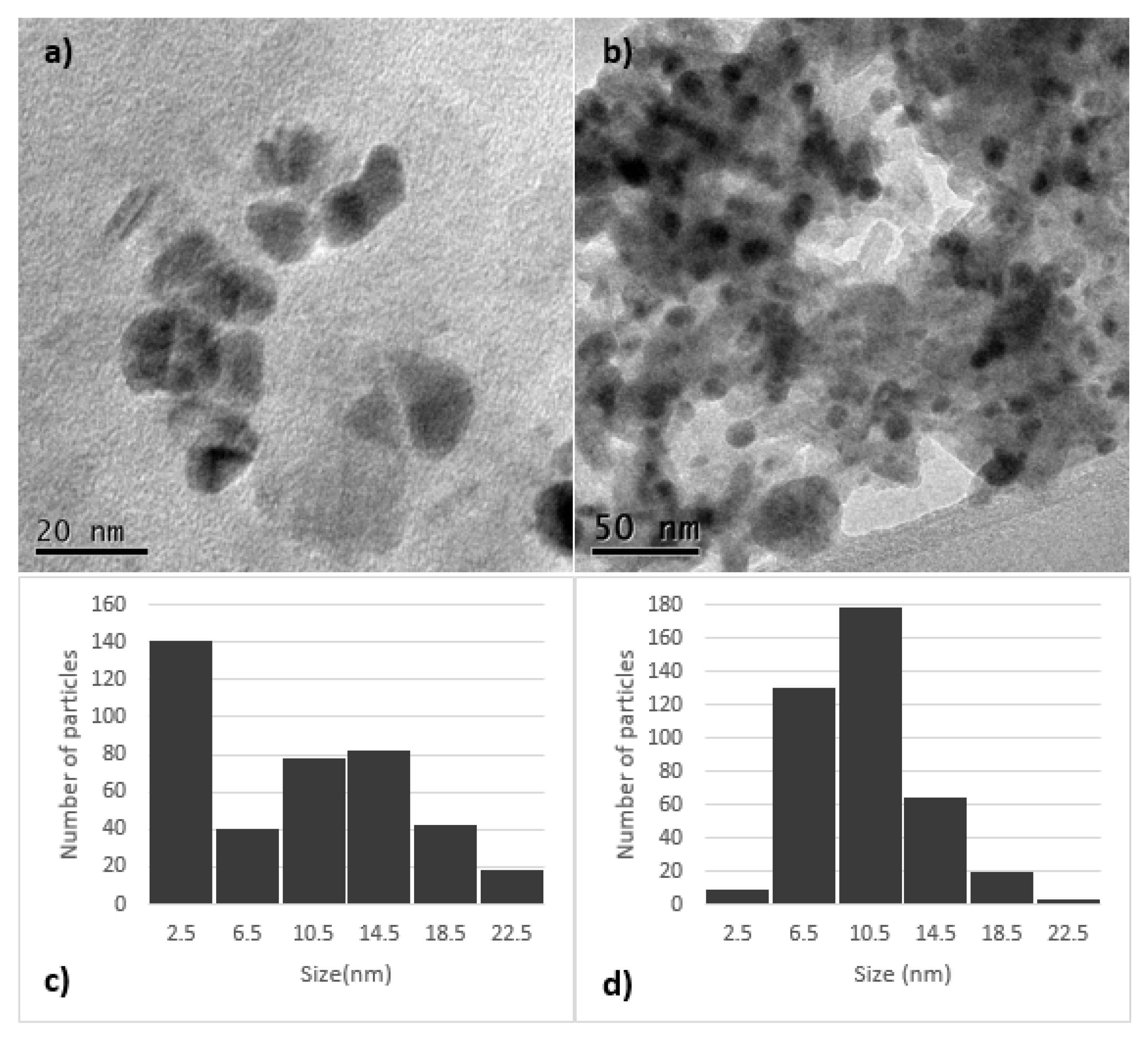
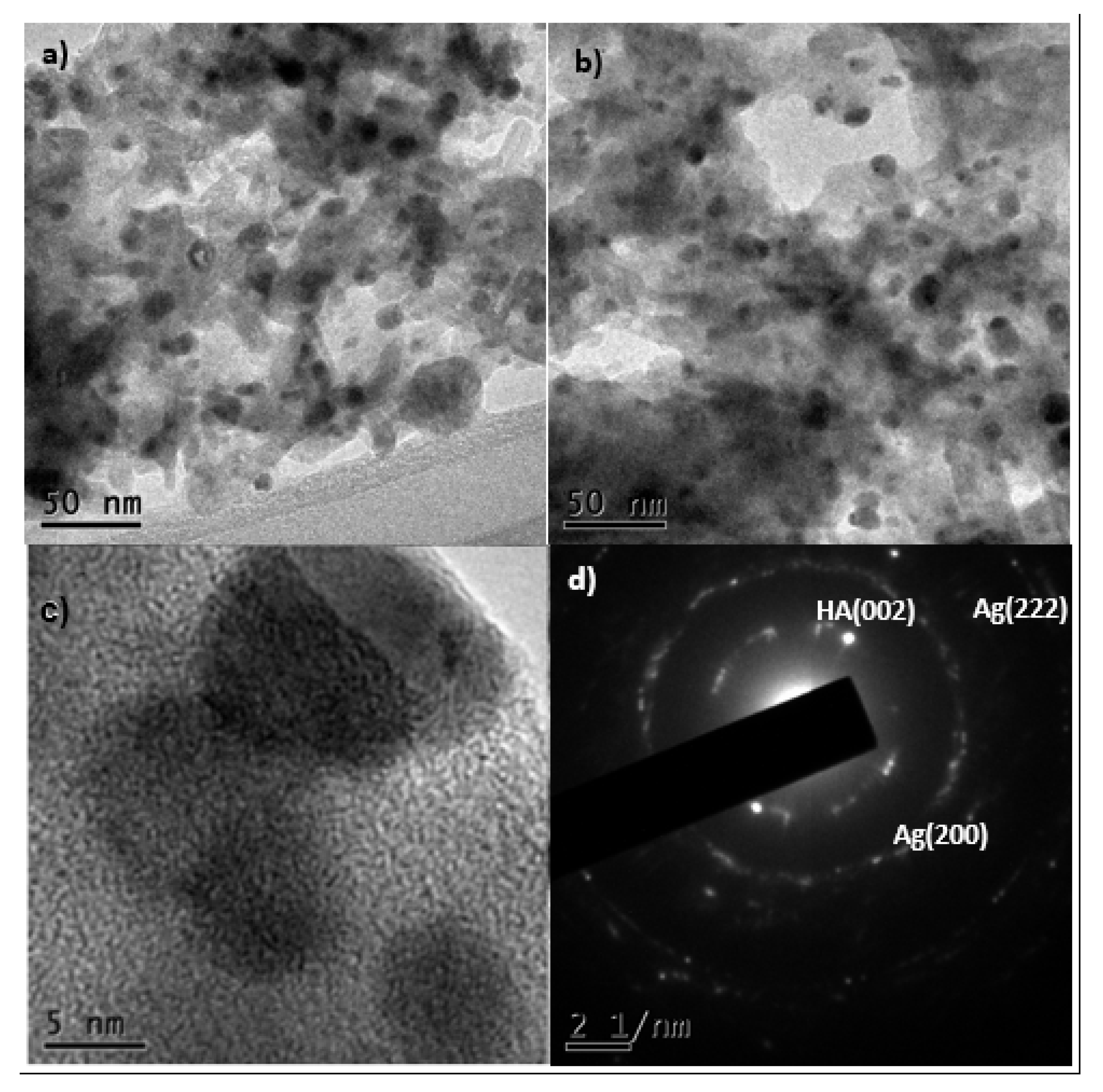
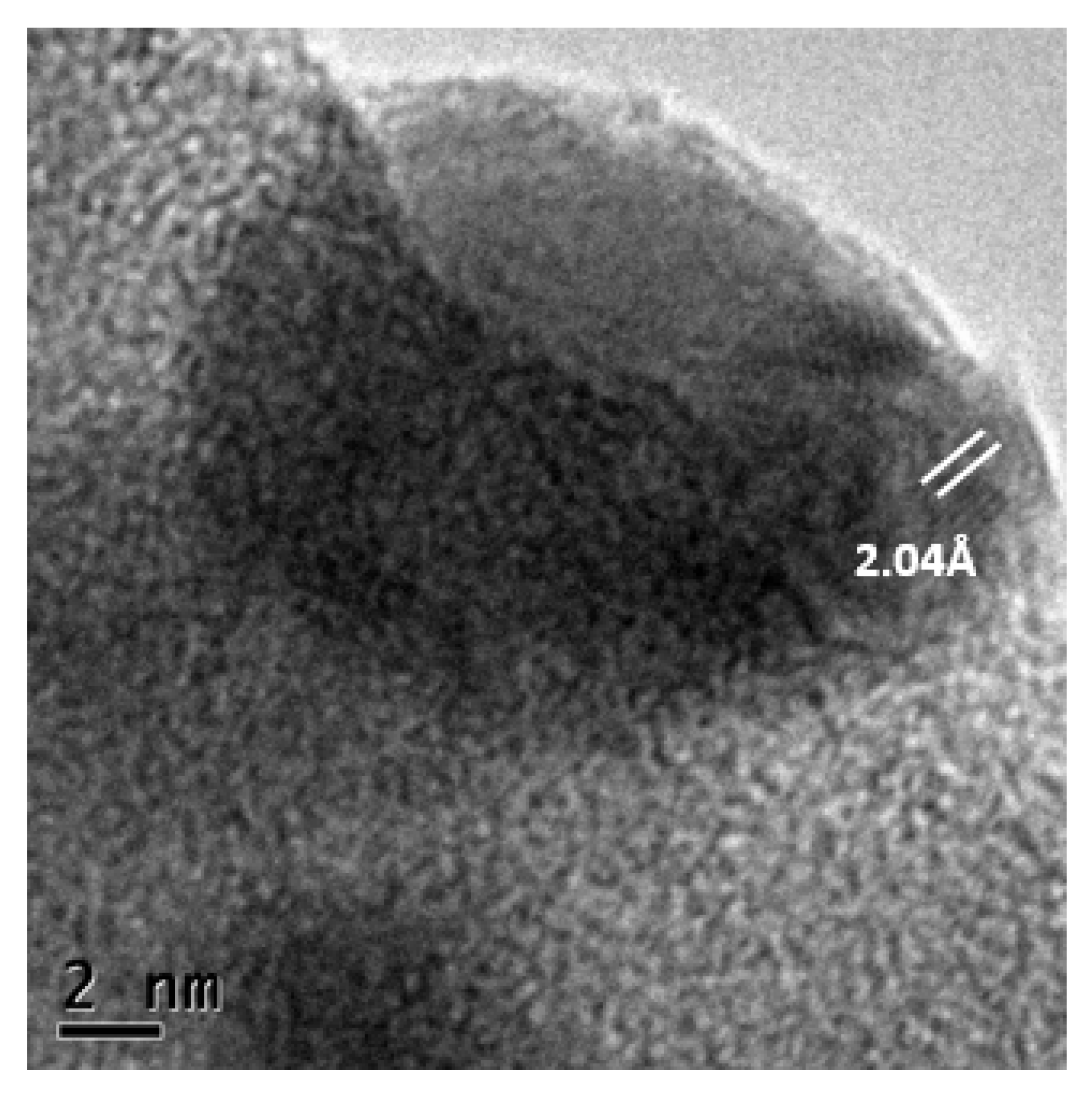
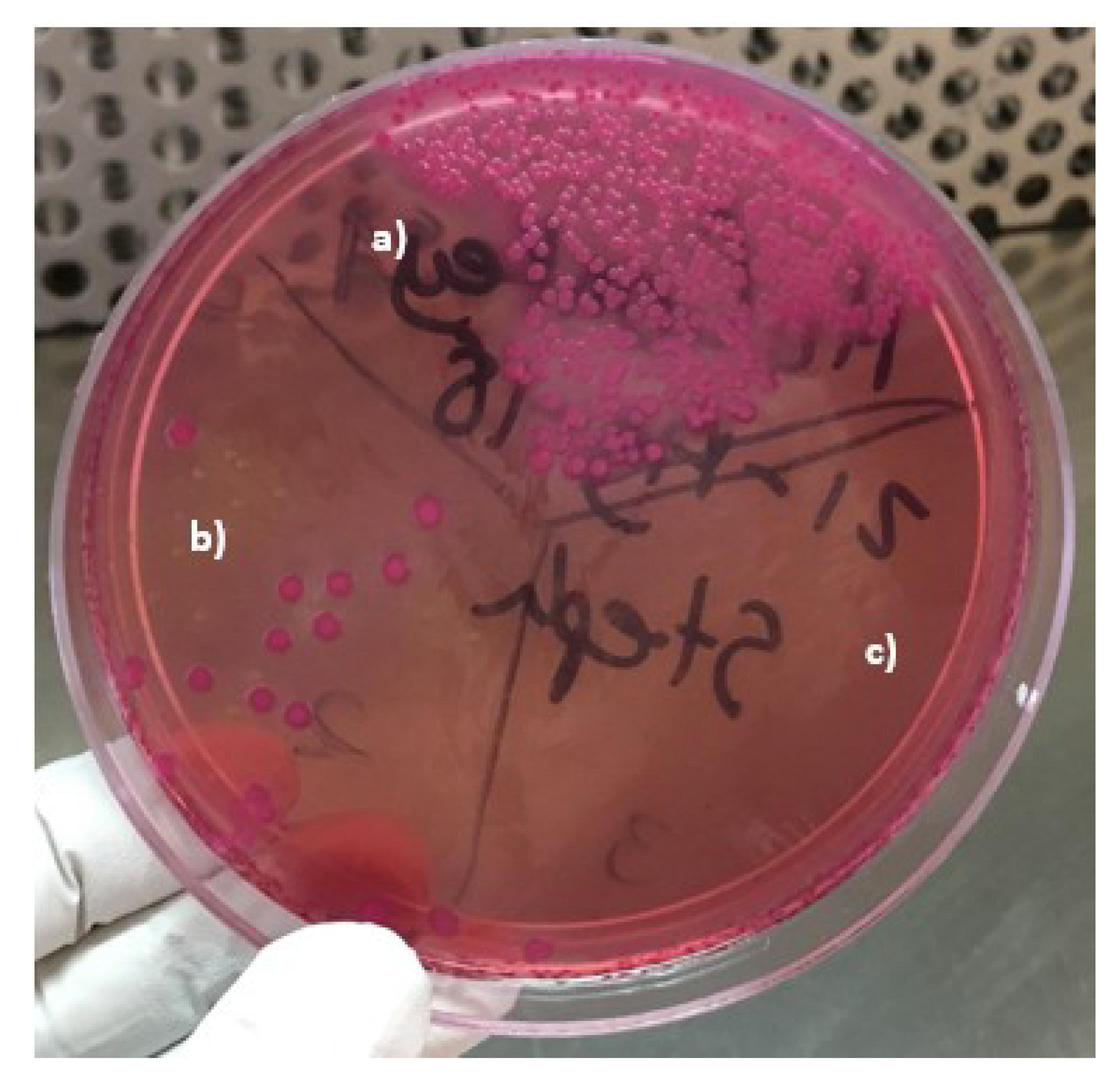
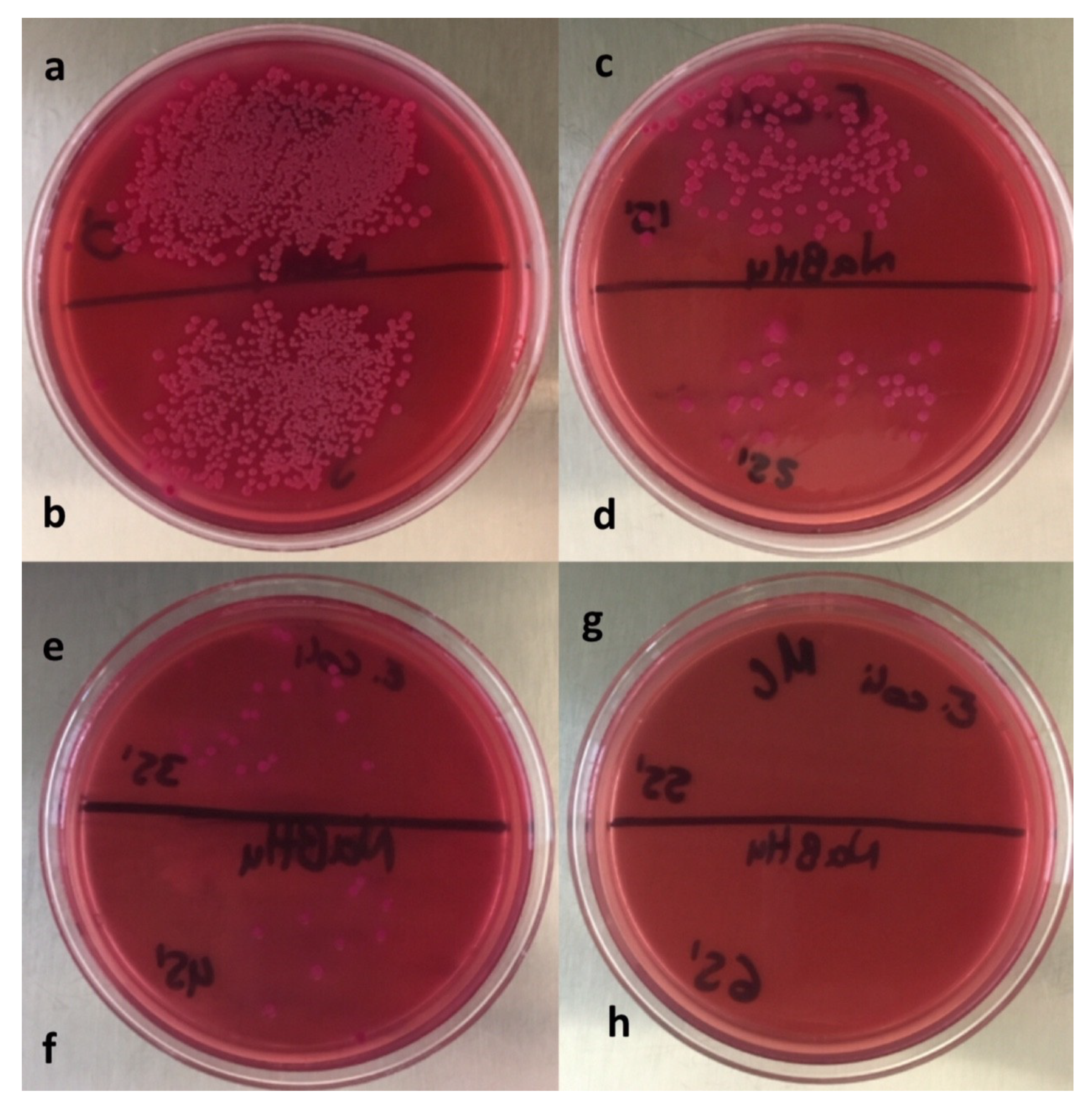
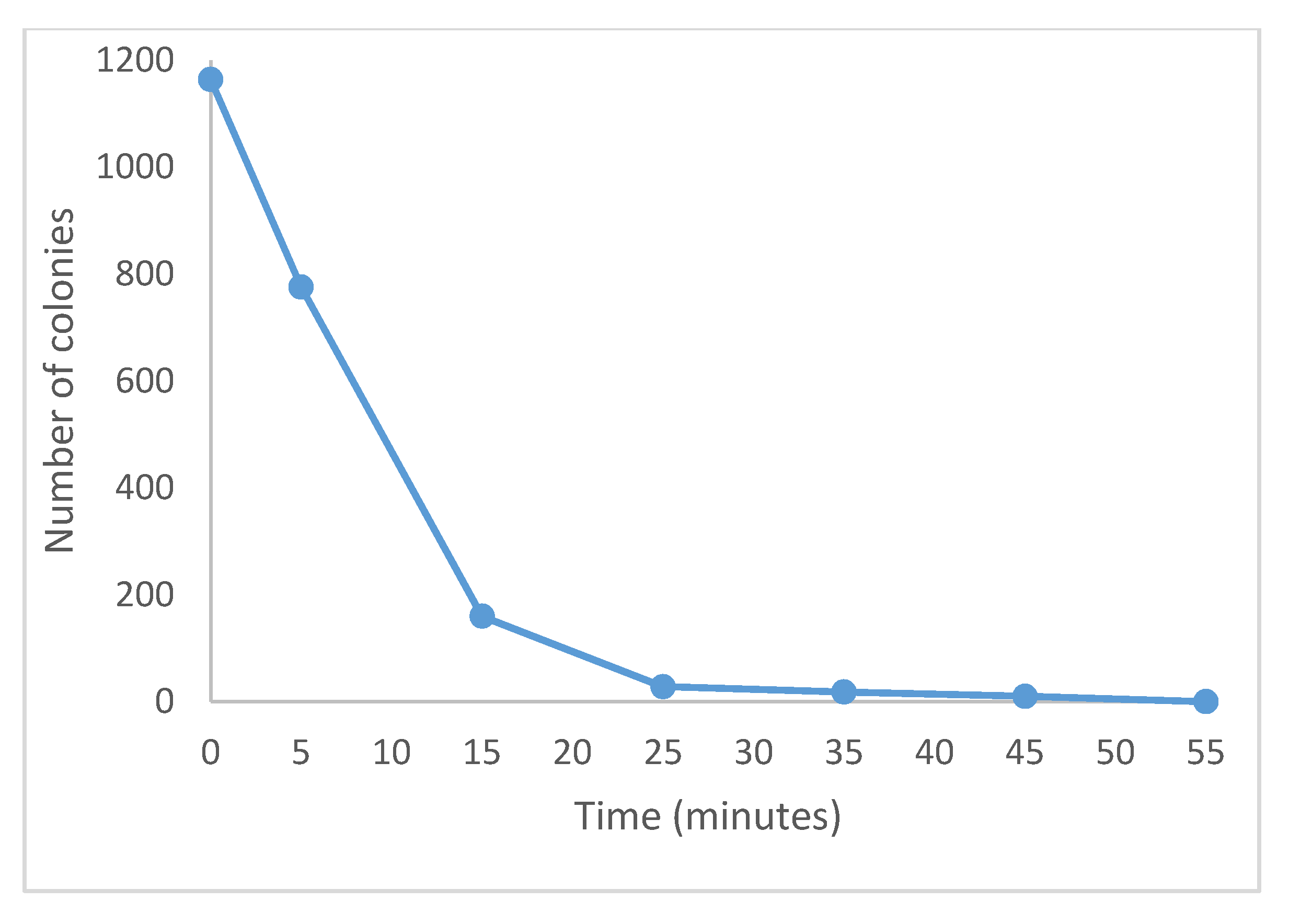
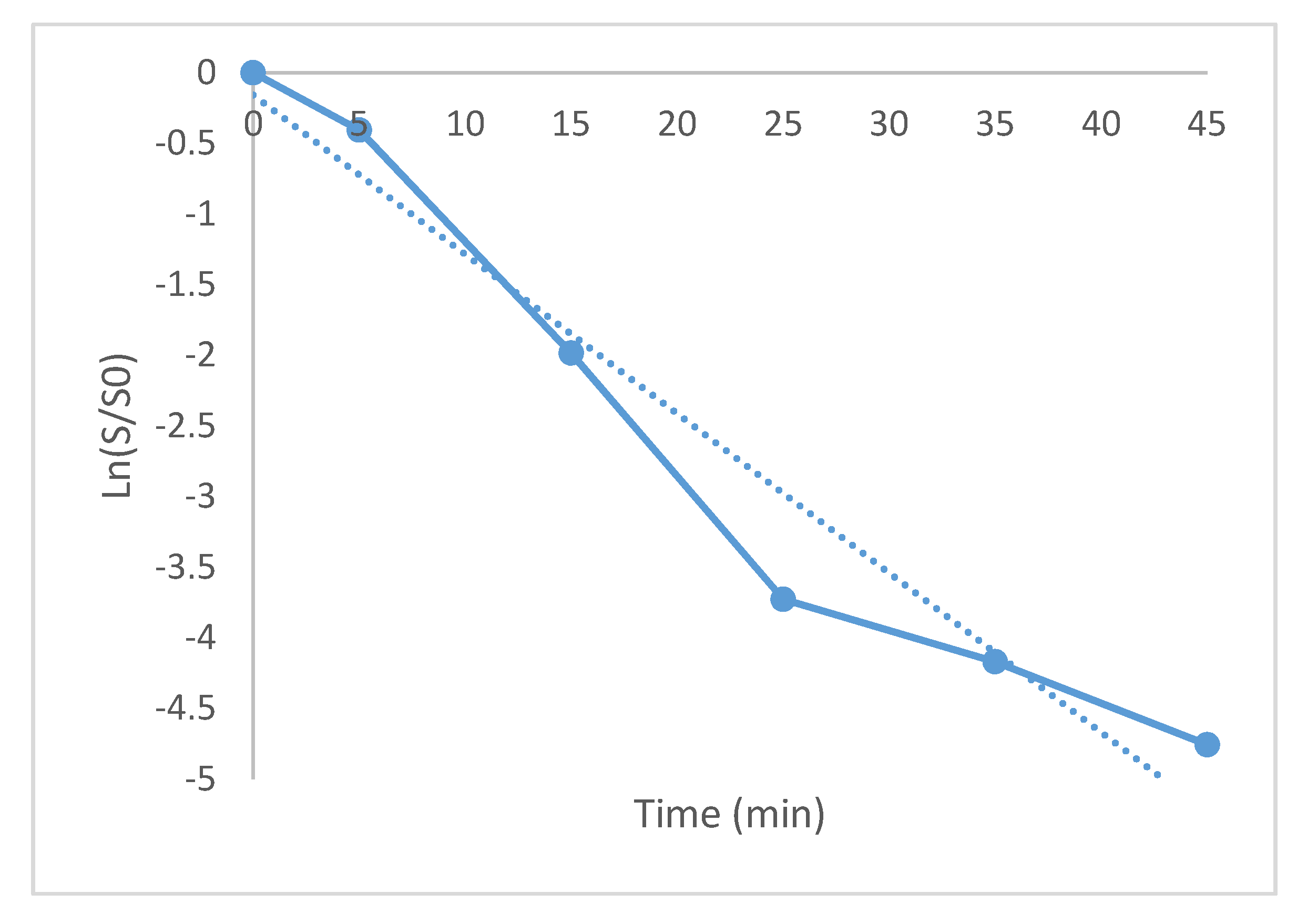
© 2020 by the authors. Licensee MDPI, Basel, Switzerland. This article is an open access article distributed under the terms and conditions of the Creative Commons Attribution (CC BY) license (http://creativecommons.org/licenses/by/4.0/).
Share and Cite
Gama-Lara, S.A.; Pérez Mendoza, M.S.; Vilchis-Nestor, A.R.; Natividad, R. Bionanotechnology: Silver Nanoparticles Supported on Bovine Bone Powder Used as Bactericide. Materials 2020, 13, 462. https://doi.org/10.3390/ma13020462
Gama-Lara SA, Pérez Mendoza MS, Vilchis-Nestor AR, Natividad R. Bionanotechnology: Silver Nanoparticles Supported on Bovine Bone Powder Used as Bactericide. Materials. 2020; 13(2):462. https://doi.org/10.3390/ma13020462
Chicago/Turabian StyleGama-Lara, Sergio Arturo, Martha Stephanie Pérez Mendoza, Alfredo Rafael Vilchis-Nestor, and Reyna Natividad. 2020. "Bionanotechnology: Silver Nanoparticles Supported on Bovine Bone Powder Used as Bactericide" Materials 13, no. 2: 462. https://doi.org/10.3390/ma13020462
APA StyleGama-Lara, S. A., Pérez Mendoza, M. S., Vilchis-Nestor, A. R., & Natividad, R. (2020). Bionanotechnology: Silver Nanoparticles Supported on Bovine Bone Powder Used as Bactericide. Materials, 13(2), 462. https://doi.org/10.3390/ma13020462






